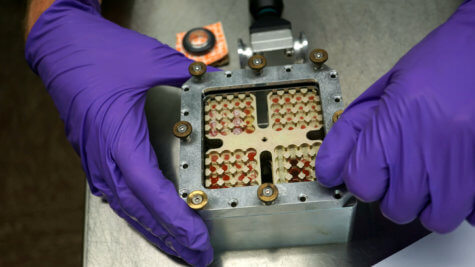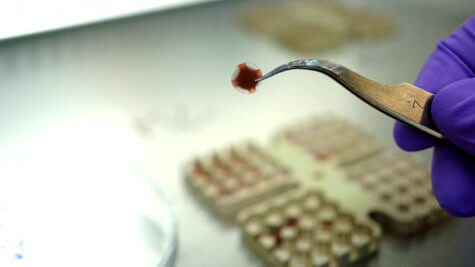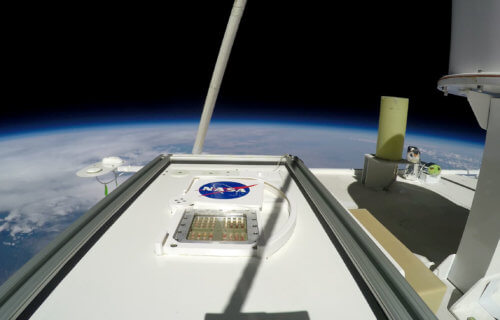COLOGNE, Germany — When people think of a colony on Mars growing their own food, they probably only think about the Hollywood blockbuster “The Martian.” Though Mark Watney’s adventures in cultivating crops on the red planet may seem like science fiction now, a new study finds food could be grown on Mars to sustain a real life human colony.
Researchers from the United States and Germany say fungi, yeast, and soil bugs are hardy enough to be successfully transported to Mars from Earth. They would survive the seven-month journey despite the hard vacuum of space, radiation, and drastic temperature changes of space travel.
The findings are based on experiments which launched bacteria into the stratosphere. This area just above the ozone layer is just like Mars, about minus-35 degrees Fahrenheit with very rarified air. The stratosphere is also hammered by the Sun’s ultraviolet radiation.

“We successfully tested a new way of exposing bacteria and fungi to Mars-like conditions by using a scientific balloon to fly our experimental equipment up to Earth’s stratosphere,” says first author Marta Filipa Cortesão, a PhD student at the German Aerospace Centre, in a media release.
“Some microbes, in particular spores from the black mold fungus, were able to survive the trip, even when exposed to very high UV radiation.”
The good and bad of bringing bugs into space
Microbe “superpowers” are a boost for manned space flights, which NASA hopes will begin by 2035. The findings open the door to “resource independence” from Earth, the international team explains.
This report also sheds new light on the threat bugs pose to future space missions. If they accidentally hitch a ride on a shuttle, they could potentially endanger an astronaut’s health or be mistaken for alien organisms.
“With crewed long-term missions to Mars, we need to know how human-associated microorganisms would survive on the Red Planet, as some may pose a health risk to astronauts,” joint first author Katharina Siems says.
“In addition, some microbes could be invaluable for space exploration. They could help us produce food and material supplies independently from Earth, which will be crucial when far away from home.”
Prepping for the trip to Mars
Study authors note that many key characteristics of the environment on the Martian surface cannot be easily replicated on our planet. The team loaded a variety of bacteria, fungi, and yeast inside an aluminum container called the MARSBOx. The samples were sent 24 miles up into the middle stratosphere, exposing them to simulated Mars conditions.

“We launched the microbes into the stratosphere inside the MARSBOx (Microbes in Atmosphere for Radiation, Survival and Biological Outcomes experiment) payload, which was kept at Martian pressure and filled with artificial Martian atmosphere throughout the mission,” Cortesão explains. “The box carried two sample layers, with the bottom layer shielded from radiation. This allowed us to separate the effects of radiation from the other tested conditions: desiccation, atmosphere, and temperature fluctuation during the flight.”
“The top layer samples were exposed to more than a thousand times more UV radiation than levels that can cause sunburn on our skin,” the German researcher adds.
NASA and Elon Musk’s SpaceX are committed to sending people to our neighboring world in the near future, but the logistical challenges of such a feat are still huge. Transporting food all the way from Earth would be impractical. Producing it locally is imperative.
“While not all the microbes survived the trip, one previously detected on the International Space Station, the black mold Aspergillus niger, could be revived after it returned home,” Siems reports. “Microorganisms are closely-connected to us; our body, our food, our environment, so it is impossible to rule them out of space travel.”
“Using good analogies for the Martian environment, such as the MARSBOx balloon mission to the stratosphere, is a really important way to help us explore all the implications of space travel on microbial life and how we can drive this knowledge towards amazing space discoveries,” the study author concludes.
The findings appear in the journal Frontiers in Microbiology.
SWNS writer Mark Waghorn contributed to this report.
